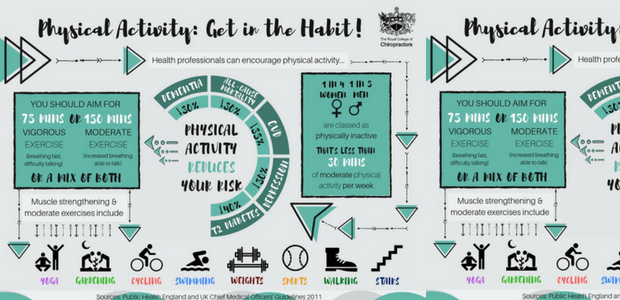The Relationship Between Stance And Pain In The Back: Techniques For Preserving Appropriate Positioning Throughout The Day
The Relationship Between Stance And Pain In The Back: Techniques For Preserving Appropriate Positioning Throughout The Day
Blog Article
Article Written By-Salisbury Rollins
Maintaining correct position isn't almost staying up straight; it has to do with straightening your body in a way that sustains your back and lowers the risk of neck and back pain. The means you sit, stand, and relocate throughout the day can dramatically influence your back health and wellness. Yet how specifically can you make certain excellent positioning regularly, also throughout active days filled with various activities? Let's dive deeper into the refined yet impactful modifications you can make to your day-to-day regimen to keep your back delighted and healthy and balanced.
Value of Correct Stance
Proper position is crucial in maintaining a healthy back and preventing discomfort. When you rest or stand with excellent pose, your spine is in placement, lowering stress on your muscles, ligaments, and joints. This alignment allows the body to distribute weight uniformly, protecting against too much stress on particular areas that can result in discomfort and pain. By keeping your back effectively straightened, you can also enhance your breathing and digestion, as slouching can compress organs and restrict their performance.
Furthermore, maintaining excellent position can boost your total look and positive self-image. When you stand tall with your shoulders back and head held high, you exude self-confidence and appear more approachable. Excellent pose can additionally make you really feel more invigorated and sharp, as it promotes appropriate blood flow and permits your muscle mass to function efficiently.
Including proper position into your daily routine, whether sitting at a desk, walking, or exercising, is important for preventing back pain and advertising overall health. Keep in mind, a small change in exactly how you hold on your own can make a significant difference in how you really feel and function throughout the day.
Common Postural Mistakes
When it involves keeping excellent stance, several people unknowingly make typical blunders that can add to pain in the back and pain. One of one of the most prevalent mistakes is slouching or stooping over while resting or standing. This position places extreme stress on the spinal column and can cause muscle imbalances and pain in the future.
Another common mistake is overarching the reduced back, which can squash the all-natural curve of the back and create discomfort. Additionally, going across legs while sitting may really feel comfy, but it can develop a discrepancy in the hips and pelvis, resulting in postural problems.
Using chiropractor tribeca that's as well soft or as well strong while sleeping can additionally influence your positioning and contribute to neck and back pain. Finally, frequently craning your neck to take a look at screens or adjusting your position frequently can strain the neck and shoulders. Bearing in mind these usual postural errors can aid you keep much better positioning and decrease the threat of back pain.
Tips for Correcting Placement
To enhance your placement and decrease back pain, it's important to concentrate on making small changes throughout your everyday regimen. Beginning by being mindful of your pose. When resting, ensure your feet are flat on the flooring, your back is straight, and your shoulders are loosened up. Avoid slouching or leaning to one side. Use ergonomic chairs or cushions to support your lower back.
When standing, disperse your weight uniformly on both feet, keep your knees slightly bent, and embed your pelvis. Engage your core muscle mass to sustain your spinal column. Take breaks to extend and walk if you have a less active job. Include view website that enhance your core and back muscle mass, such as slabs or bridges.
While resting, utilize a cushion that sustains the all-natural curve of your neck to keep proper back alignment. Avoid sleeping on your belly, as it can stress your neck and back. By being mindful of these pointers and making small changes, you can gradually fix your positioning and relieve pain in the back.
Conclusion
Keep in mind, preserving great position is crucial to preventing back pain and promoting spinal wellness. By being mindful of your positioning, distributing weight evenly, and engaging your core muscle mass, you can lower stress on your back and reduce the risk of pain and injury. Incorporate ergonomic assistance, take normal breaks to stretch, and strengthen your core and back muscles to preserve appropriate placement throughout the day. Your back will certainly thank you for it!
